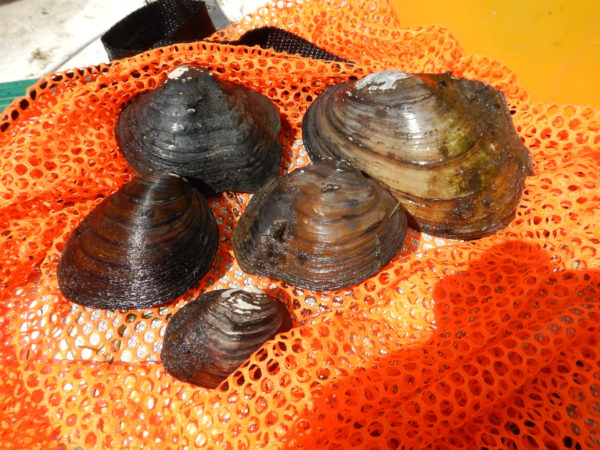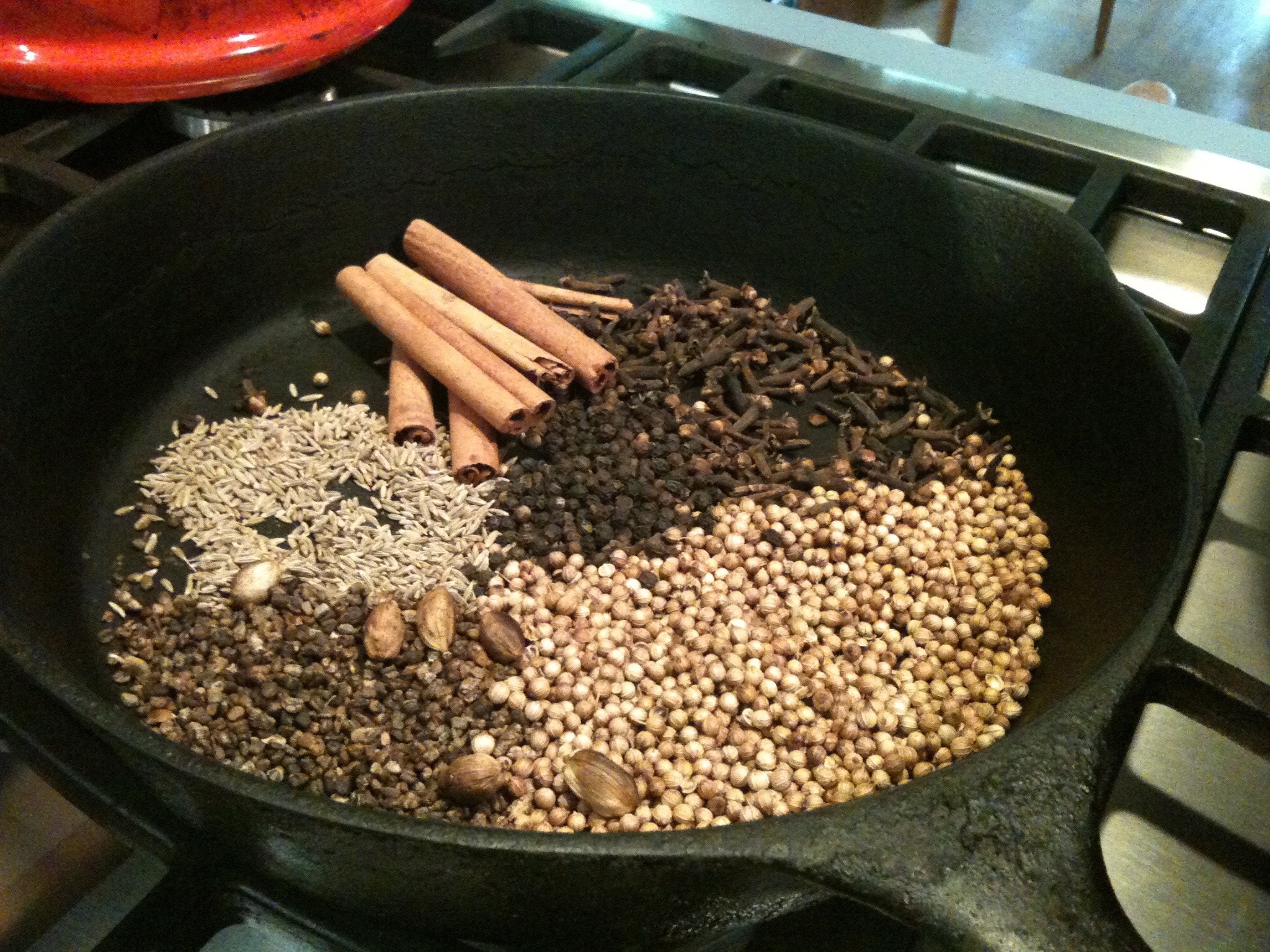
This story is a part of “A Year in the Wild Kitchen of the Great Lakes,” a series in partnership with expert forager Lisa M. Rose, with the mission of nurturing a deeper connection with the natural world through foraging. To get started with your foraging journey, begin here with our “Framework to Sustainable and Safe Practices.”
As the season shifts and the air chills, I find myself drawn to the warmth and sustenance that the wild foods of fall offer — from roots to mushrooms to nuts to herbs — and take great satisfaction in concocting nourishing recipes for my family and friends. Among these concoctions is my Woodland Chai Tea.
Gathered from fields and forests, each plant in my foraged Woodland Chai Tea offers its own unique depth and benefits. Come with me in this newest release to explore the earthy, grounding nature of the ingredients in my chai — you’ll learn their flavors, harvesting methods and where to find them to then brew into a delicious beverage for fall.

This Great Lakes Woodland Chai is even delicious as an ICED beverage! Look out Pumpkin Spice Lattes! (Photo Credit: Lisa M. Rose)
Roots, Mushrooms and Tiny Woodland Shoots
Burdock
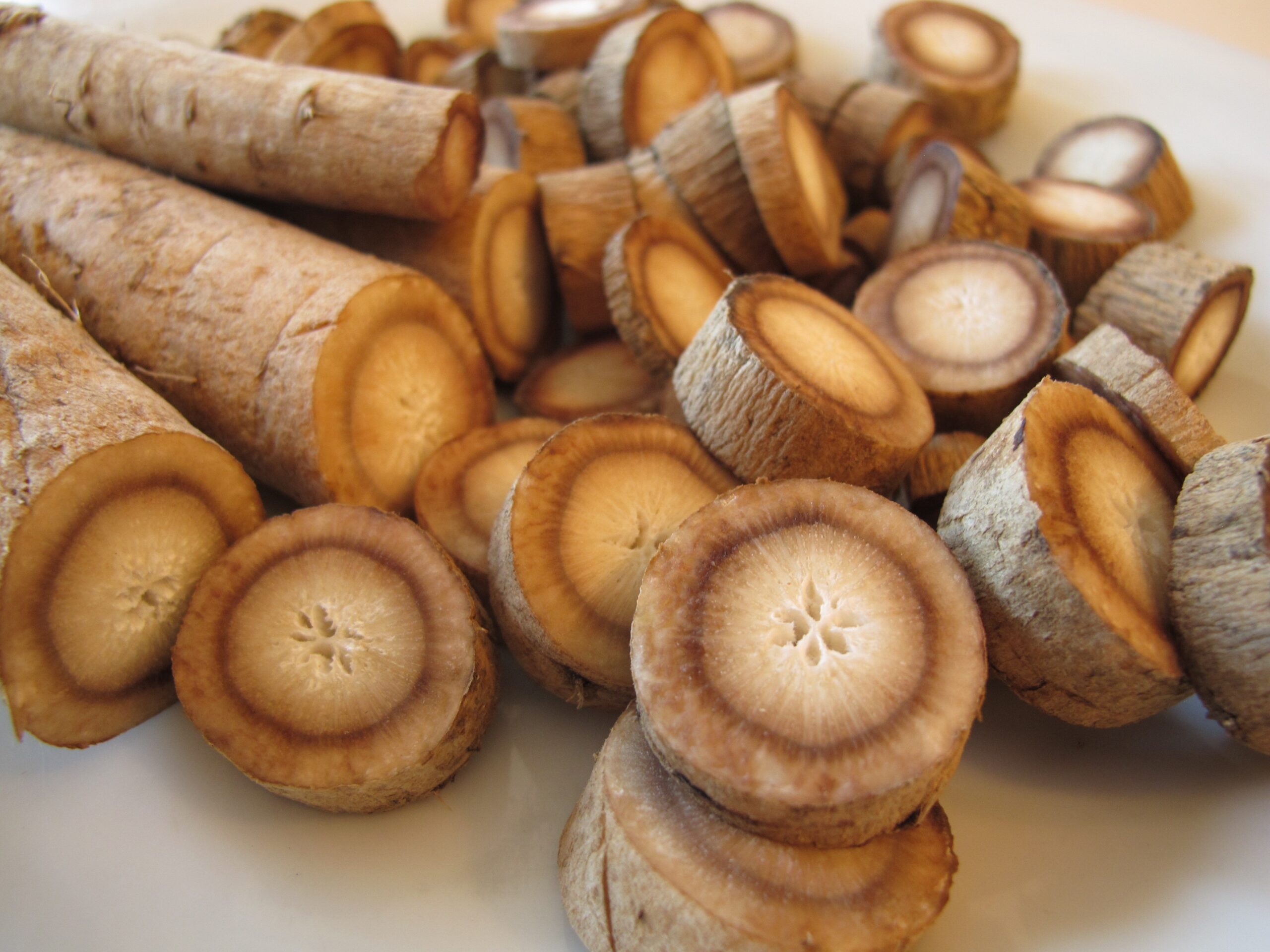
Sliced burdock root ready to be dried and roasted. (Photo Credit: Lisa M. Rose)
One of the key bases in my Woodland Chai Tea is burdock root. Burdock (Arctium species), often dismissed as a pesky weed in the U.S., is highly regarded elsewhere as “gobo” and is a culinary staple in Asian markets. Its long taproot offers a mildly sweet and earthy flavor, perfect for adding depth to broths, teas, or even roasted dishes.

Burdock in the ground, ready to go to flower. (Photo Credit: Lisa M. Rose)

Leaf, roots of burdock, cleaned and roasted. (Photo Credit: Miriam Doan)
The roots are best harvested in early spring or fall of the plant’s first year, requiring a wide dig around the base to avoid breaking the root. It’s wise to gather burdock in soil that’s free of potential pollutants and easy to dig given its deep tap root.
Chicory
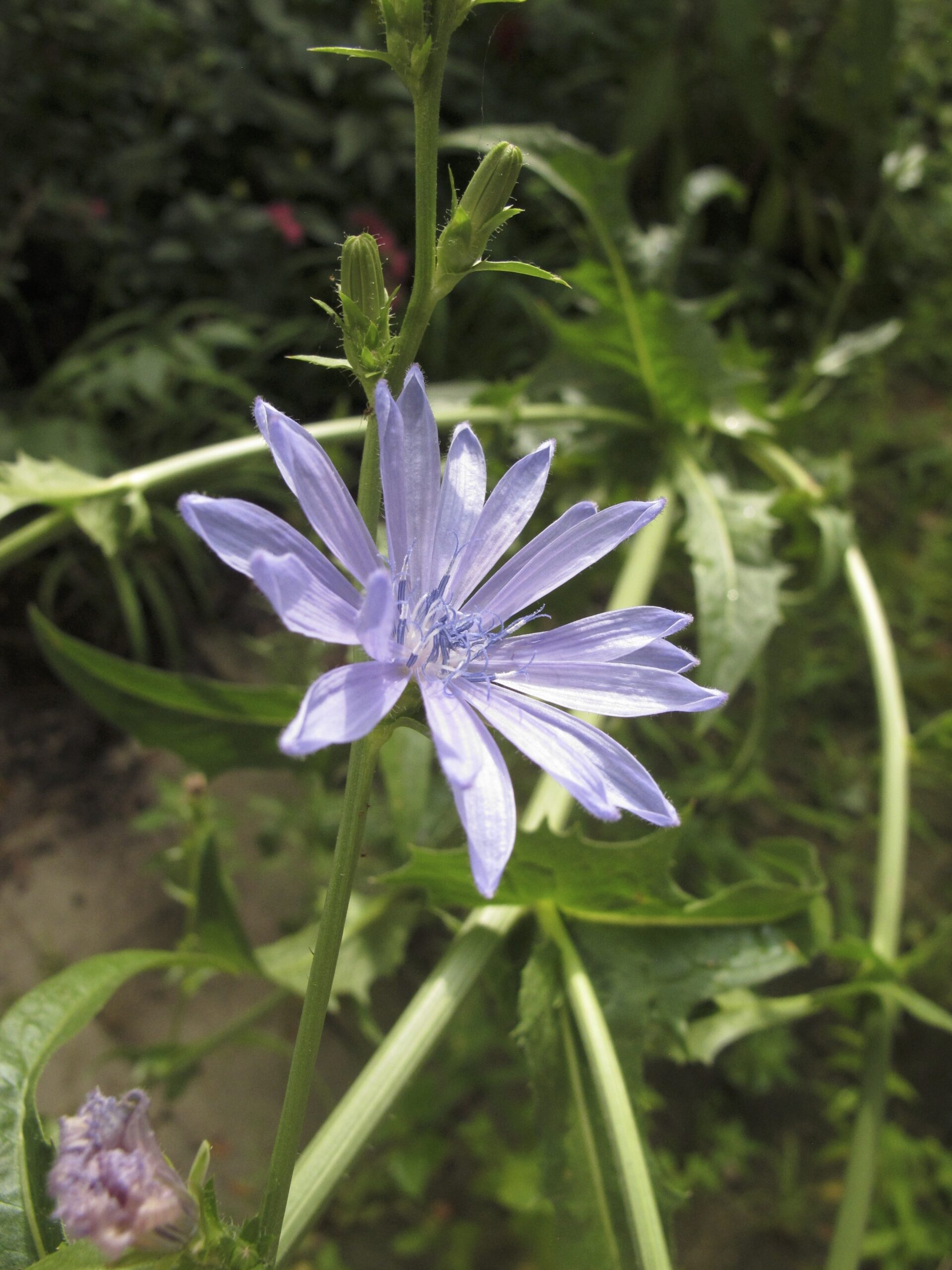
Chicory in flower. (Photo Credit: Lisa M. Rose)
Moving on to chicory (Cichorium intybus), a rugged plant thriving along roadsides and open fields, this wild relative of endive offers beautiful blue flowers in summer and pleasantly bitter greens in spring. The root, which can be roasted and brewed as a coffee substitute, brings an earthy, bitter note to teas and pairs well with the warmth of chai spices. Dig the roots beginning in late summer, choosing clean, undisturbed sites away from traffic and pollutants.
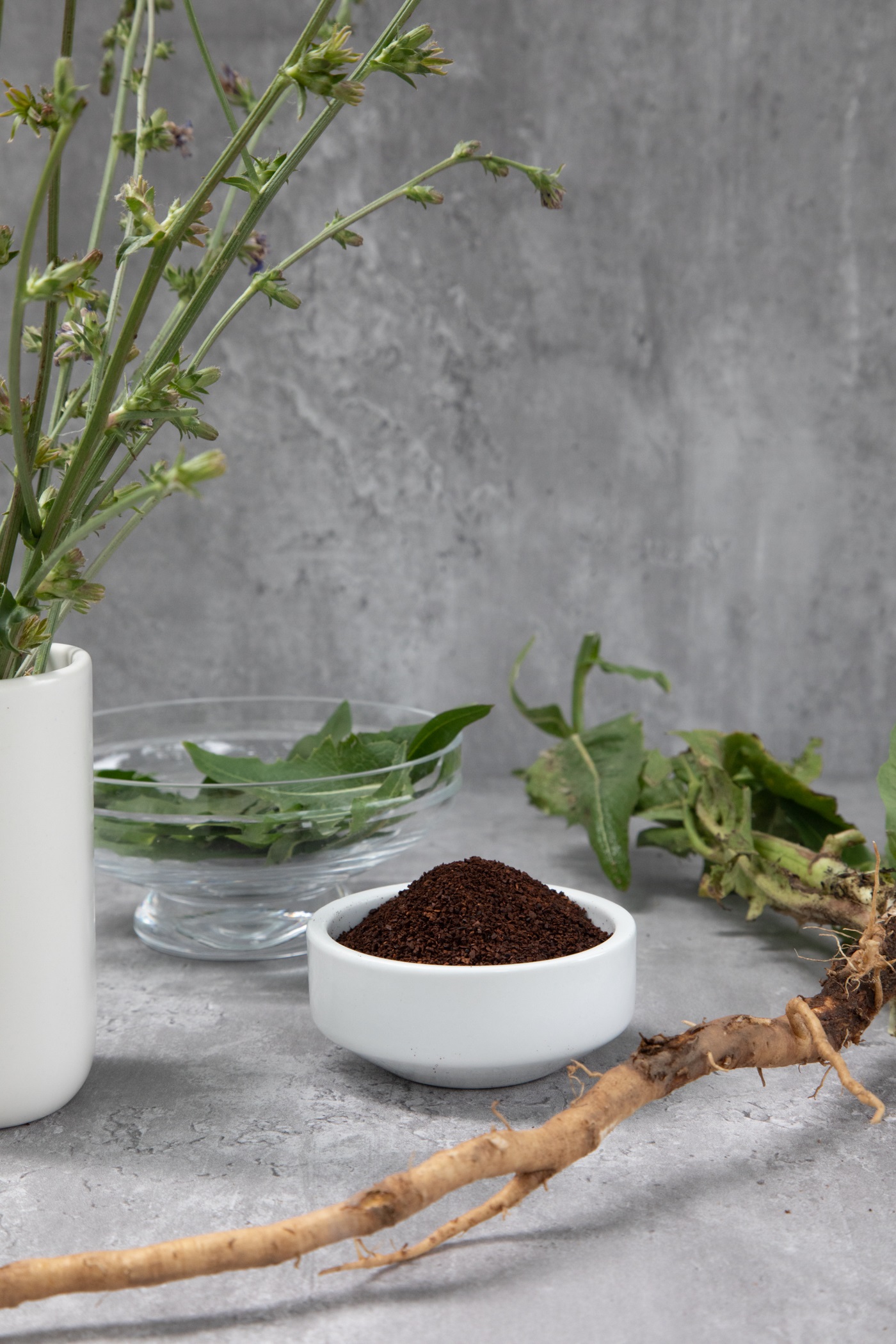
Chicory root dried, roasted, and ground. (Photo Credit: Miriam Doan)
Chaga
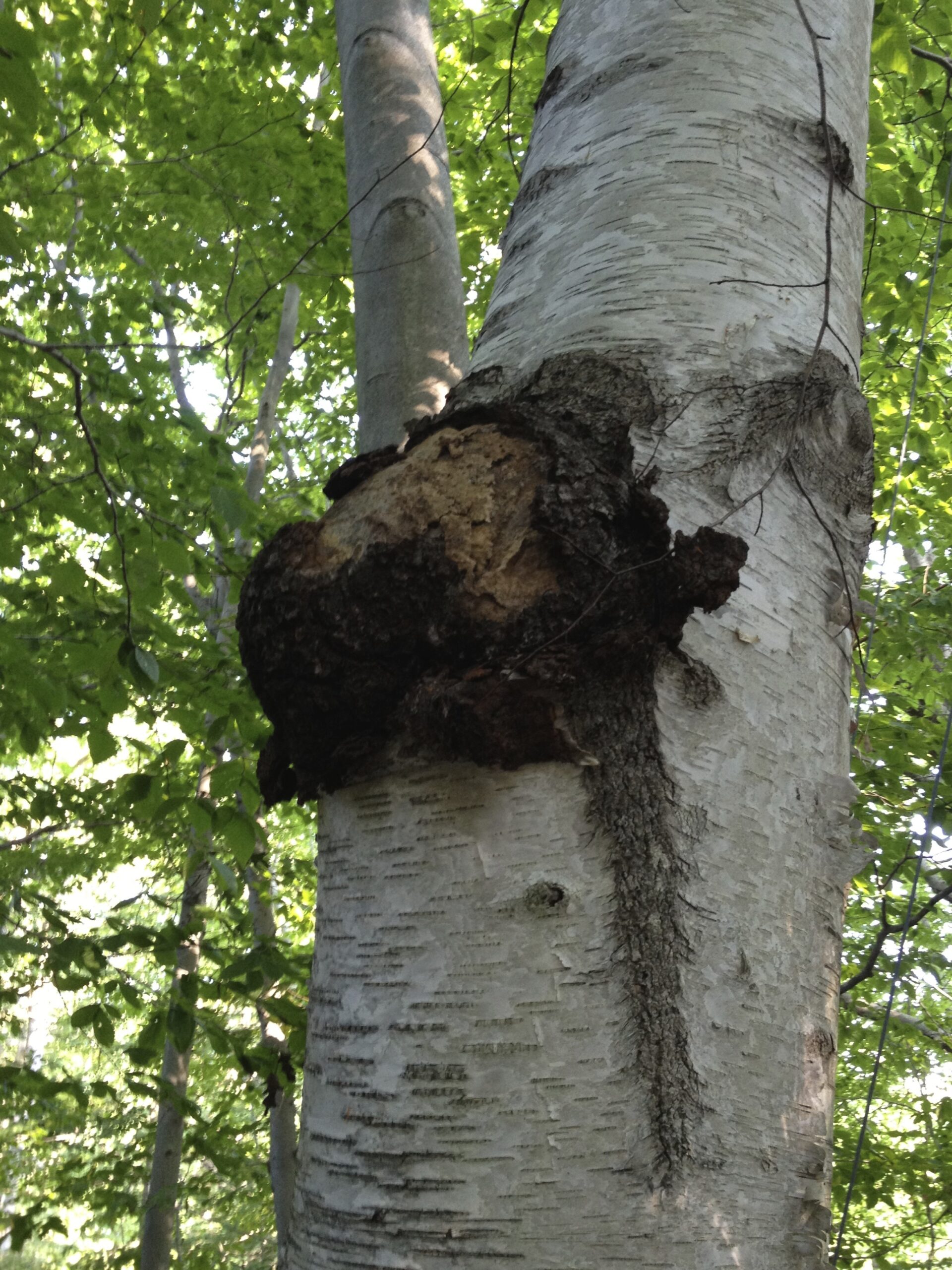
Chaga on the birch tree. (Photo Credit: Lisa M. Rose)
Chaga (Inonotus obliquus), is one of the more special and less common ingredients. Chaga is a mushroom that thrives on birch trees and has been cherished in northern cultures for centuries. Its flavor profile, often described as earthy and chocolate-like, enriches teas and elixirs, particularly in immune-supporting recipes. When harvesting chaga, sustainable gathering is essential, as chaga grows slowly and is increasingly popular in foraging circles. Look for mature fruiting bodies and remove only a portion, leaving enough to regrow.
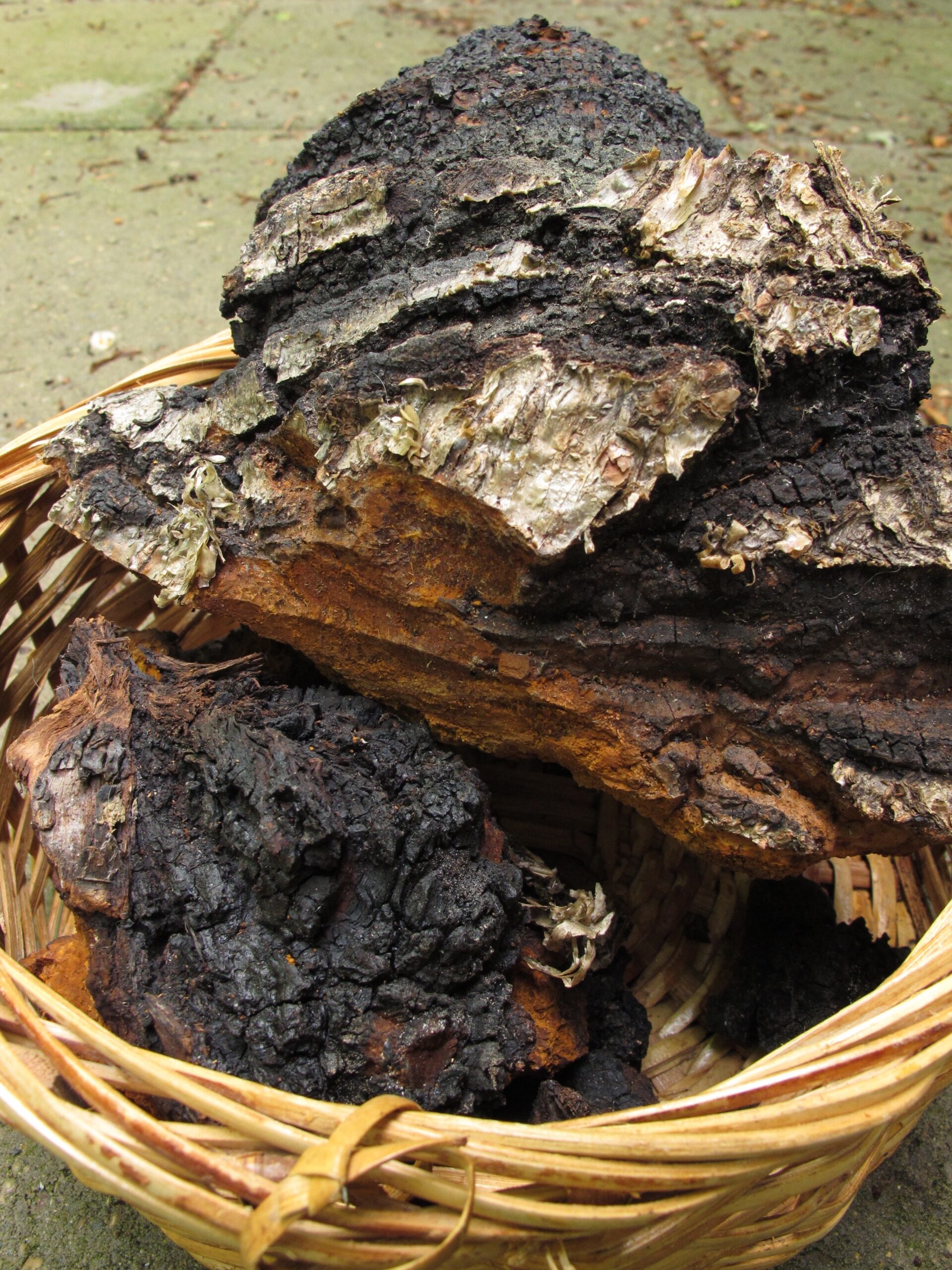
Chaga ready for processing. (Photo Credit: Lisa M. Rose)
Maitake
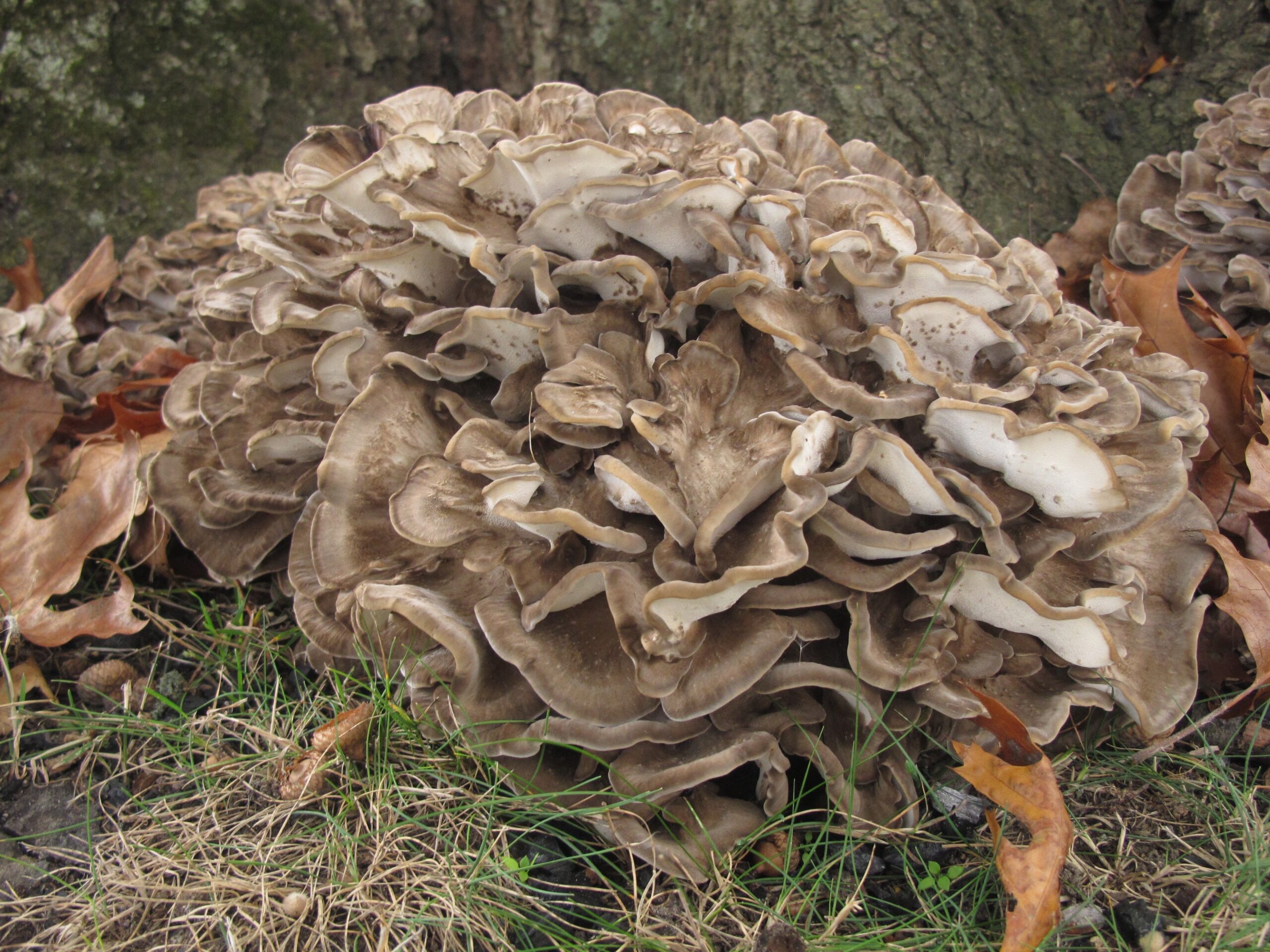
Maitake growing at the base of an oak tree. (Photo Credit: Lisa M. Rose)
The next two ingredients are also mushrooms. The first is maitake (Grifola frondosa), also known as “hen of the woods.” Found at the base of oak trees, maitake offers a unique umami flavor that intensifies as it cooks. Rich in nutrients, maitake makes a perfect addition to broths and teas, adding immune-boosting benefits. I include it for its nutrition and flavoring in this chai blend. Mid-fall is the best time to gather maitake, using a sharp knife to cut away only part of the mushroom, allowing for future growth.
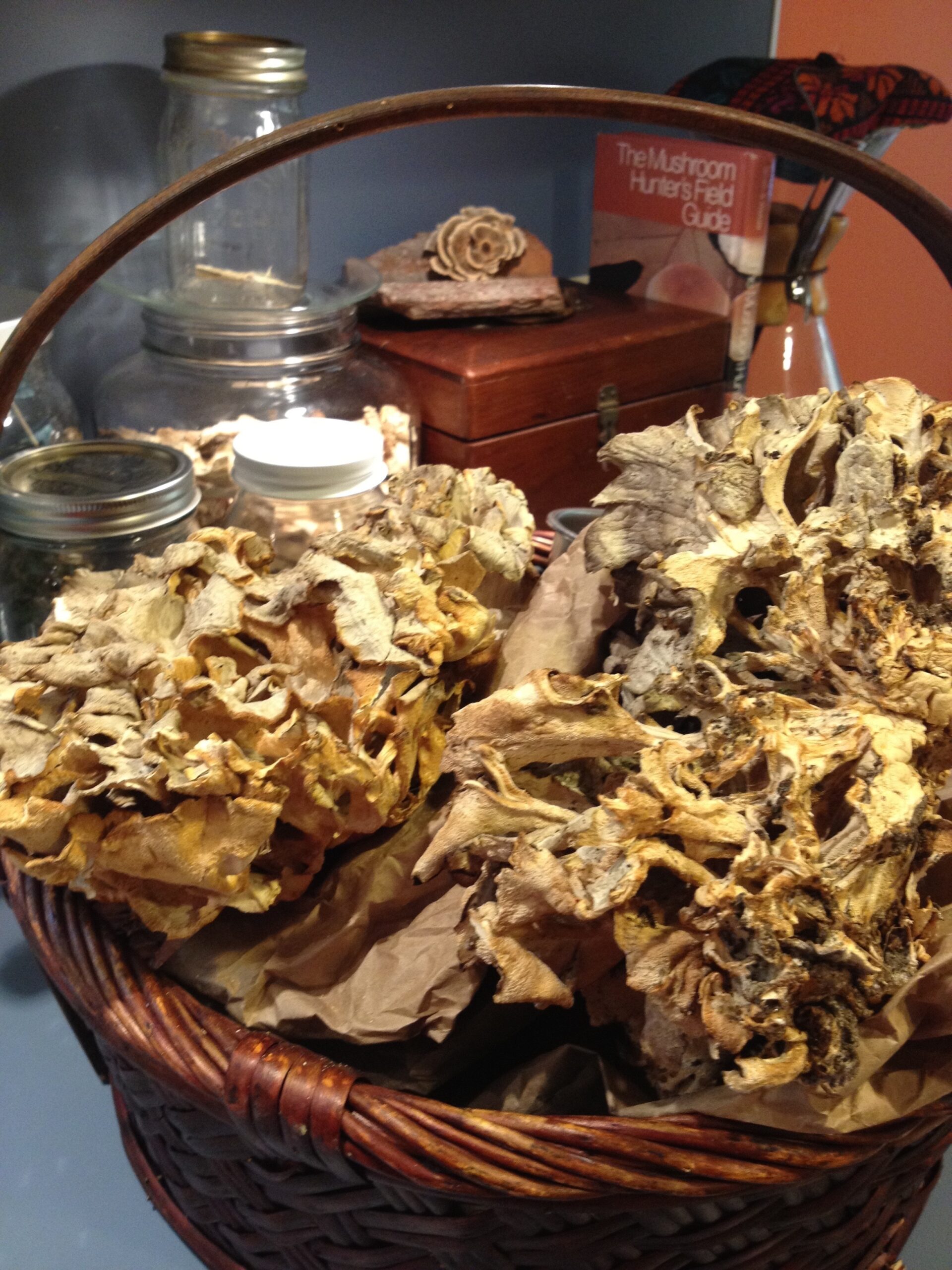
Maitake harvest for drying. (Photo Credit: Lisa M. Rose)
Reishi
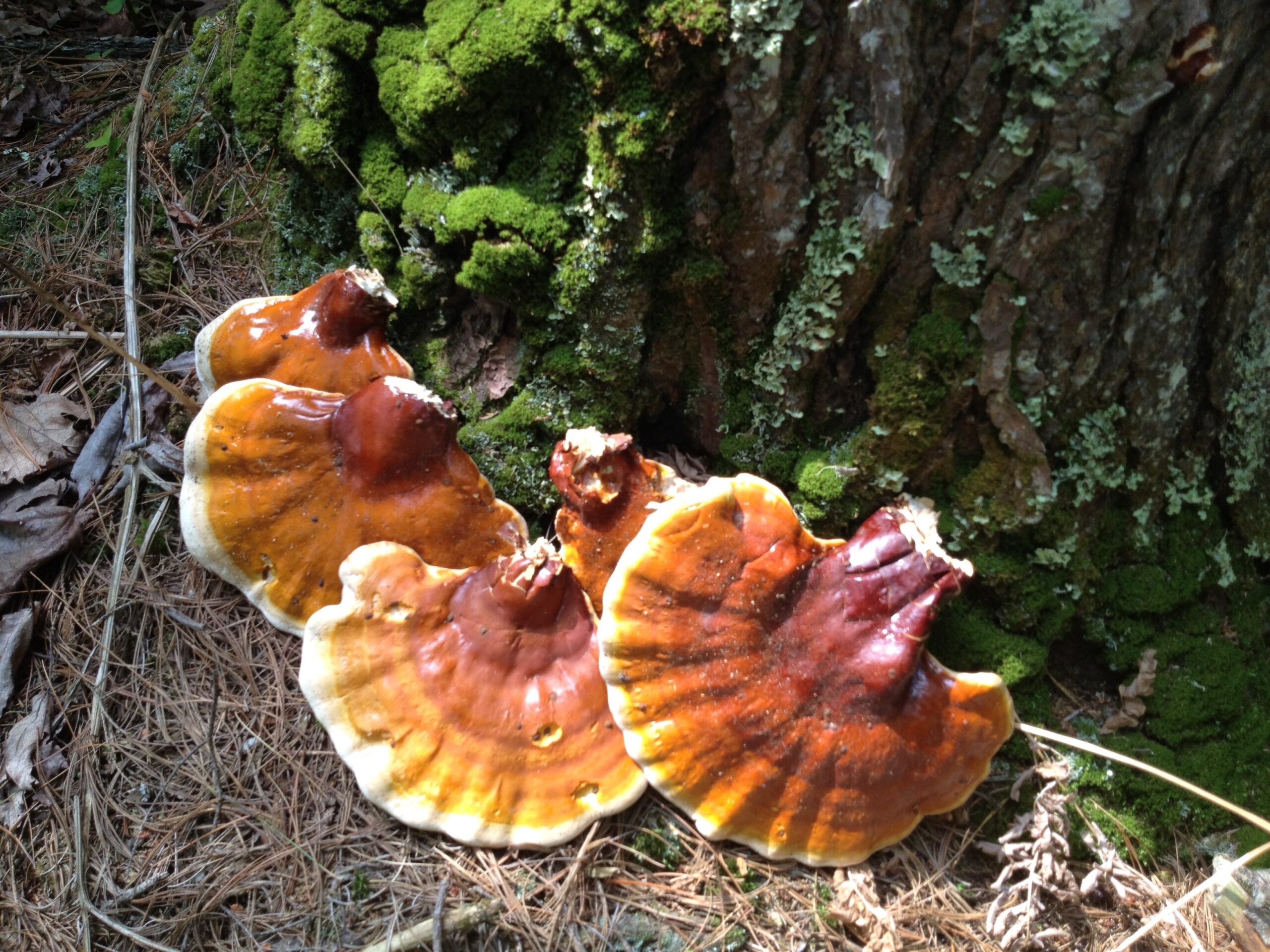
Reishi harvest. (Photo Credit: Lisa M. Rose)
Reishi (Ganoderma species) rounds out the mushroom profile with a deep, almost caramel-like deep earth flavor. Revered in traditional Chinese medicine, reishi supports immune health and is known for its calming effects. Gather reishi carefully, leaving its base attached to the tree, and dehydrate the mushroom or dry it in the sun for long-term storage.

Sun-curing foraged reishi in the Upper Peninsula on the shores of Lake Michigan. (Photo Credit: Lisa M. Rose)
A powerful addition to chai, reishi balances the warmth of spices with its grounding, medicinal qualities. But be warned — too much reishi can be overpowering and bitter and ruin a good blend.
Wintergreen
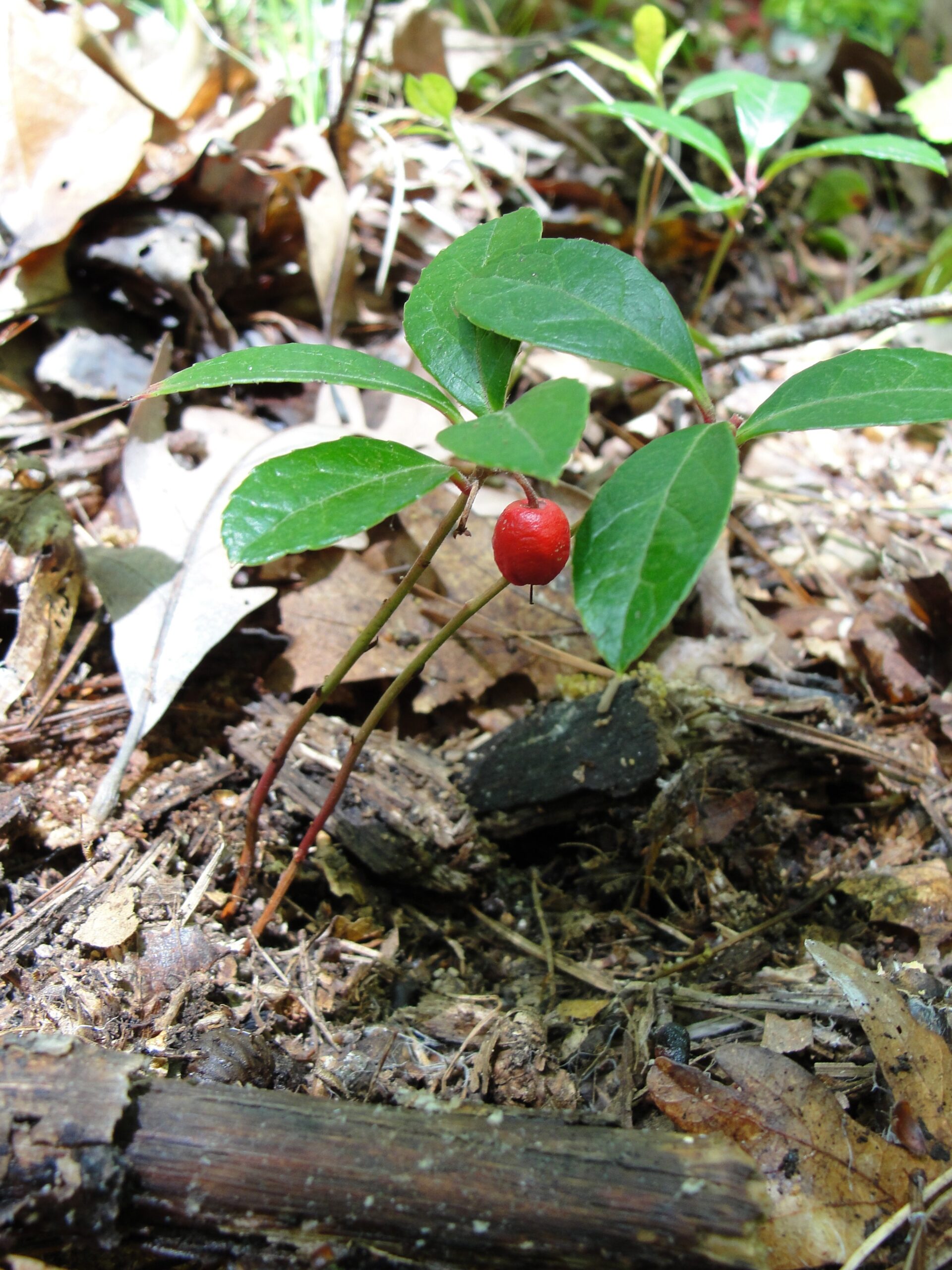
Wintergreen growing along the forest floor. (Photo Credit: Lisa M. Rose)
Wintergreen (Gaultheria procumbens) adds a signature minty aroma to this blend. Found in sandy forest soils, its small, shiny leaves and bright berries are a delightful addition to teas, desserts, and even syrups. Harvest only one or two leaves per plant, and as the plant stays relatively green all winter they can be gathered into late fall and winter dependent on snow cover.
Great Lakes Woodland Chai Tea
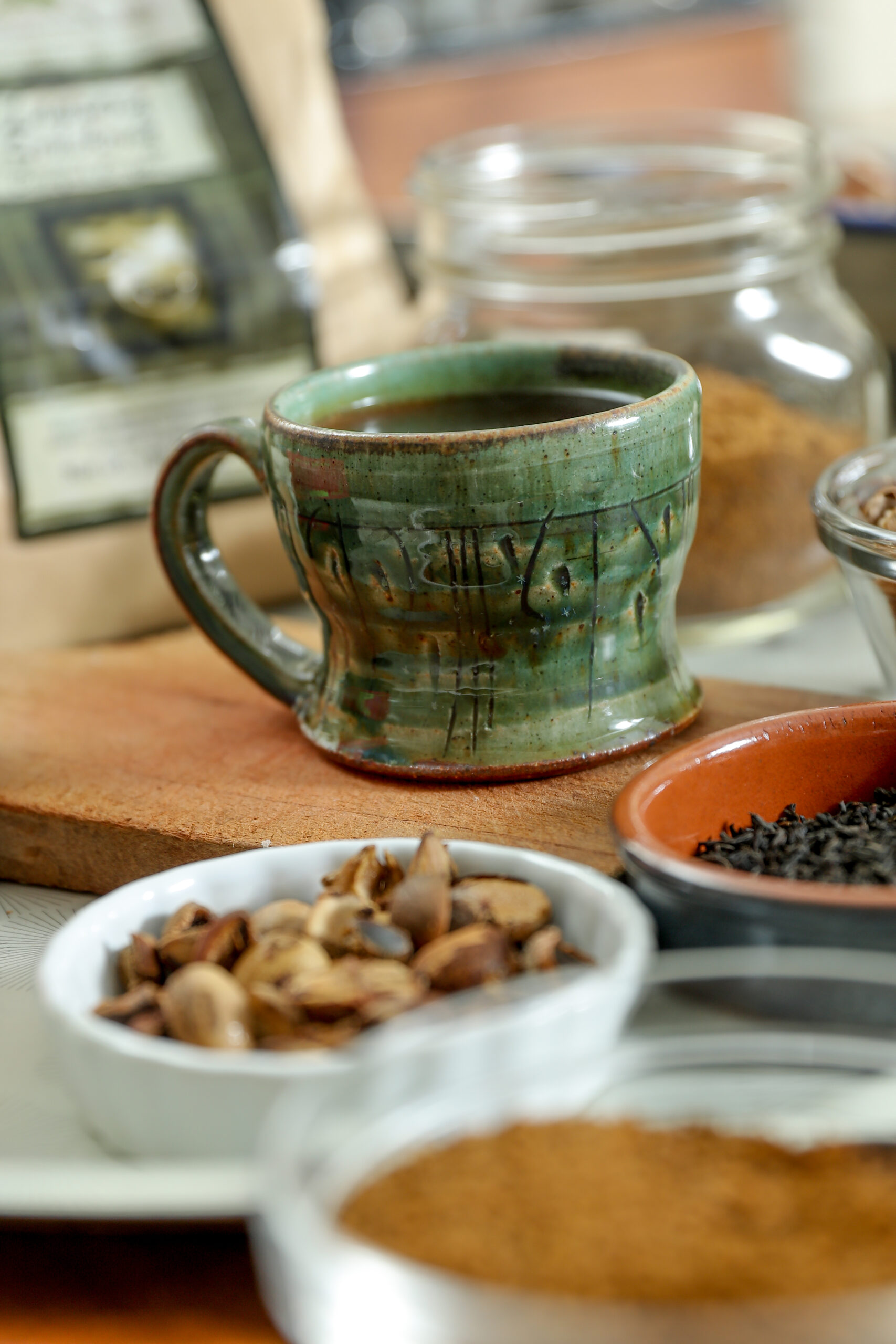
Great Lakes Woodland Chai. (Photo Credit: Lisa M. Rose)
Yield: Makes 2 quarts
This earthy, nourishing chai combines roots, spices, and wild mushrooms for a deeply warming beverage. Add honey or maple syrup for a touch of sweetness, and choose lapsang souchong tea for a smoky twist, or ceylon for a balanced flavor.
Ingredients:
- 1 tbsp burdock root, chopped, dried and roasted
- 1 tbsp chaga mushroom, powdered or roughly chopped
- 1 tbsp chicory root, dried, roasted and ground
- 1 tbsp maitake mushroom, dried and chopped
- ½ tsp reishi mushroom, dried and chopped
- 1 tbsp cinnamon sticks or 1 tsp ground cinnamon
- 1 tbsp coriander seeds
- 1 tbsp cloves
- 1/2 tbsp cumin seeds
- 1/4 tbsp cardamom pods
- 1/4 tbsp black peppercorns
- 1/4 tbsp dry ginger root
- 1/4 tsp wintergreen leaves (optional, fresh or dried, for a minty aroma)
- 1 small piece of nutmeg (grated in after toasting)
Optional Add-Ins:
- 1-2 tbsp Michigan maple syrup or local honey, for sweetness
- 1-2 spicebush berries (or a small piece of star anise for a hint of licorice)
- 1 tsp vanilla bean paste
Tea Addition:
- 1 tbsp loose black tea (such as lapsang souchong for smokiness or ceylon for a balanced flavor)
Directions:
- Toast the Spices: In a dry skillet, gently toast the cinnamon, coriander, cloves, cumin, cardamom, black pepper, and ginger root for 1-2 minutes until fragrant. Allow the spices to cool slightly, then lightly grind them.
- Prepare the base: In a large pot, combine 2 quarts of water with the burdock root, chaga, chicory, maitake or reishi, and wintergreen (if using). Bring the mixture to a boil, then reduce the heat to a simmer. Let the chai cook for 25-30 minutes.
- Simmer with Spices: Add the toasted spices and, if desired, the spicebush or star anise to the pot. Continue to simmer for another 10-15 minutes to allow the flavors to meld.
- Tea Addition: Remove the pot from heat and add the loose black tea. Steep for 3-5 minutes, depending on your preferred strength, then strain out the tea leaves, mushrooms, and spices.
- Sweeten & Serve: Stir in maple syrup or honey to taste. For a creamy chai, add milk or a non-dairy alternative. Garnish with a dusting of ground nutmeg or a whole cinnamon stick.
About the Author
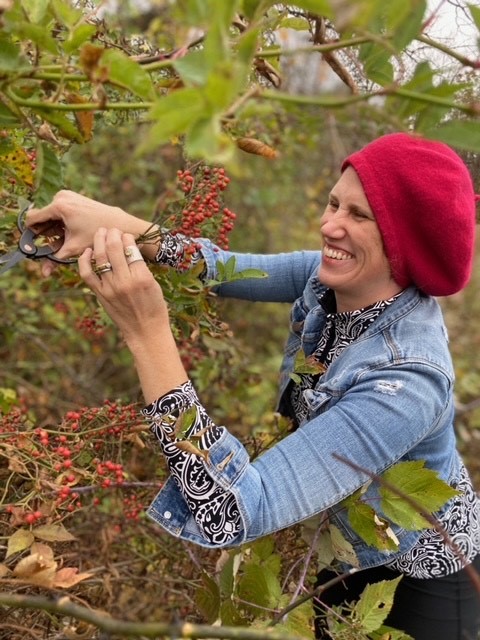
Lisa M. Rose is an ethnobotanist, wild foods chef, and author with a profound dedication to exploring the symbiotic relationship between humans and plants. With an academic background in anthropology and community health, her culinary journey has been rich and varied, including stints with notable establishments and figures such as Stags Leap in Napa Valley, Alice Waters’ The Edible Schoolyard, and organic farmers in Northern Michigan.
Rose’s work is celebrated in her bestselling books, “Midwest Foraging” and “Midwest Medicinal Plants,” among others and her expertise is frequently sought by major media outlets, including the Chicago Tribune, PBS, NPR, Martha Stewart and CNN.
Catch more news at Great Lakes Now:
Foraged Fruit and Nuts: Wild Apples & Abundant Acorns
Foraged Flavors of the Sun: High Summer Wild Herbs and Plants
Featured image: Roasting the traditional chai spices to accompany the woodland wild plants in the chai. (Photo Credit: Lisa M. Rose)




